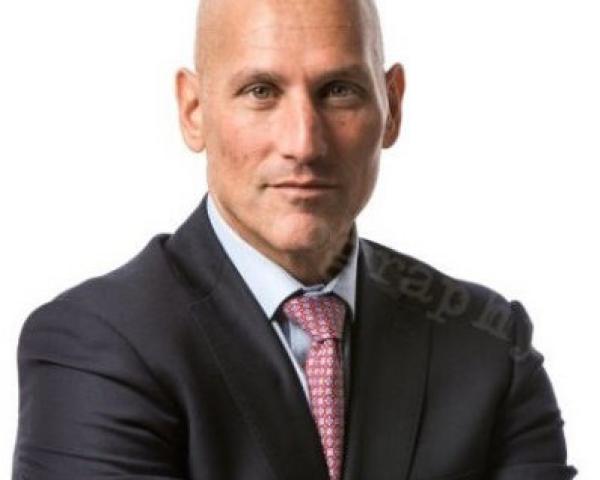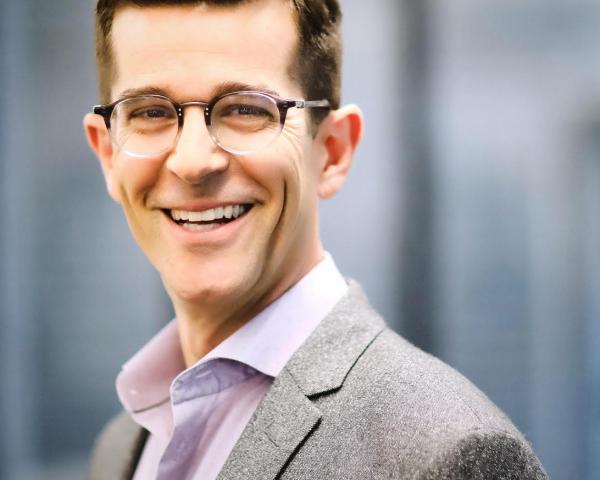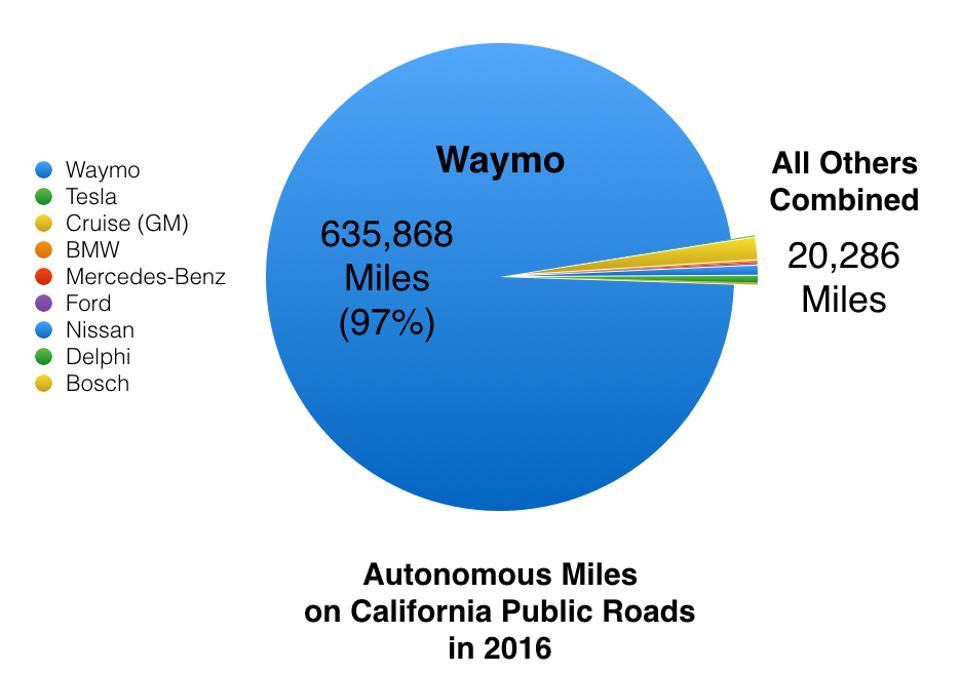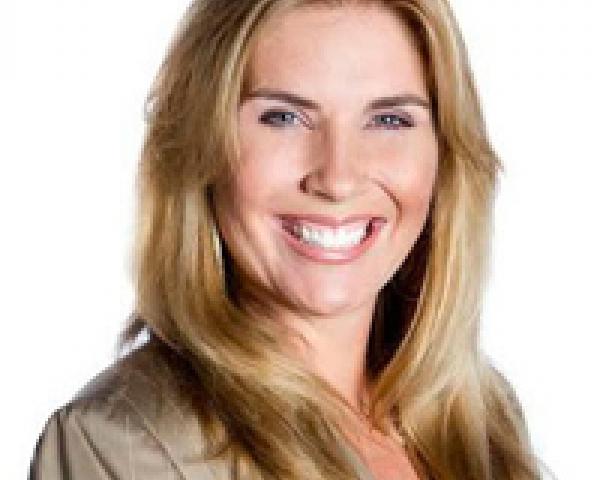Carriers Must Think Like Distributors
In small commercial, carriers must look beyond their portfolios and optimize the whole value chain.

In small commercial, carriers must look beyond their portfolios and optimize the whole value chain.

Get Involved
Our authors are what set Insurance Thought Leadership apart.
|
Partner with us
We’d love to talk to you about how we can improve your marketing ROI.
|

Andrew Robinson is an insurance industry executive and thought leader. He is an executive in residence at Oak HC/FT, a premier venture growth equity fund investing in healthcare information and services and financial services technology.

Francois Ramette is a partner in PwC's Advisory Insurance practice, with more than 15 years of strategy and management consulting experience with Fortune 100 insurance, telecommunications and high-tech companies.

Jamie Yoder is president and general manager, North America, for Sapiens.
Previously, he was president of Snapsheet, Before Snapsheet, he led the insurance advisory practice at PwC.
What became apparent in 2016 is that insurtech advancements and the forces of change may not see any significant slowdown.

Get Involved
Our authors are what set Insurance Thought Leadership apart.
|
Partner with us
We’d love to talk to you about how we can improve your marketing ROI.
|

Denise Garth is senior vice president, strategic marketing, responsible for leading marketing, industry relations and innovation in support of Majesco's client-centric strategy.
A key rule to keep in mind when thinking about insurtechs: Data is nothing – context is everything.

Get Involved
Our authors are what set Insurance Thought Leadership apart.
|
Partner with us
We’d love to talk to you about how we can improve your marketing ROI.
|

Conny Dorrestijn is a board member of Holland FinTech. She has worked for more than 25 years in marketing and business development roles in the international financial technology industry. She currently is responsible for global payments marketing at FIS.
The insurance purchase cannot (and should not) be reduced to a Facebook like or an Amazon-like “1-Click” purchase.

“The first is customers, who have grown accustomed to an easy, Facebook-like experience in interacting with large service providers.”Insurance transactions are not equivalent to Facebook “likes.” Technology as a communications tool is fine. I only communicate with my agent via email. It’s easy, it’s 24/7, and it’s documentation of our communication, something that has paid off for me more than once in the last 25-plus years. See also: Top 10 Insurtech Trends for 2017 But technology is only a tool. It’s a means to an end, not an end in and of itself. The insurance purchase cannot (and should not) be reduced to an Amazon-like “1-Click” purchase. Consumers are not buying crew socks or body lotion on the internet, they’re entering into a complex, legal contract that, if not properly executed after identifying their unique exposures to loss, could result in catastrophic financial loss. Lives could be ruined, families destroyed. This is serious stuff, not the subject of goofy box store clerks and prancing lizards. If I make a bad decision buying a Bluetooth speaker online, I might be out $30 or the inconvenience of returning it. If I make a bad decision buying insurance online, I could lose almost everything I own and 25% of my income for the next 20 years. No matter how consumers have grown accustomed to an easy, Facebook-like experience online, there is more to the “insurance experience” than the purchasing component. Just ask anyone who has ever had a significant claim, especially one that didn’t go so well. Then, there’s this in the article:
"New algorithms for predicting risk, for example using machine learning, will allow for vast automation of the underwriting process, and managing contracts and identities with the blockchain will reduce the resources needed for fraud detection."What it may also enable is “black box” discrimination, even if unintended, because no one knows for sure what those algorithms are using to make underwriting decisions. And, if your insurance premium is based on 600 “big data” factors, how do you know what impact each factor had on your premium or what you can do to control your premium? One might argue, as do data analytics businesses selling their services, that this is somehow good for the insurance company…but what about the consumer? Then we have:
"The second source of pressure comes from competitors. Not only will consumers be more likely to give their business to a digital-native insurer, but entire new kinds of exposure are opening that will give a challenger an opportunity to strike. The cybersecurity market is growing everywhere, along with the pressure to contain and manage the risk better, yet traditional insurers are slow to make convincing offers to threatened customers."One reason insurers are slow to respond is that developing an insurance premium that is, by law, adequate, not excessive, and not unfairly discriminatory is very difficult to do for a brand new type of exposure or one that is evolving almost daily. If you can’t price the coverage, you can’t determine what the coverage should be or not be. Insurers caught flack for not responding quickly to the Uber phenomenon. According to some, two early insurers that responded with broad, inexpensive coverage quickly took a beating with two $1 million-plus claims because they didn’t understand the exposure, overinsured it and underpriced it. See also: All Insurers Must Become Insurtechs Technology can be a cool tool, but it is not the be-all, end-all savior or nemesis of the insurance industry. Insurance has always been and will most likely always be a mechanism for assisting consumers and businesses in identifying their exposures to loss and enabling them to manage them without going bankrupt. We must always keep that mission in mind no matter what the revolutionary new idea du jour might be.
Get Involved
Our authors are what set Insurance Thought Leadership apart.
|
Partner with us
We’d love to talk to you about how we can improve your marketing ROI.
|

William C. Wilson, Jr., CPCU, ARM, AIM, AAM is the founder of Insurance Commentary.com. He retired in December 2016 from the Independent Insurance Agents & Brokers of America, where he served as associate vice president of education and research.
You and I and other taxpayers are going to foot the bill, as will employers. But I have a modest proposal. Let's make the pill-pushers pay.

Get Involved
Our authors are what set Insurance Thought Leadership apart.
|
Partner with us
We’d love to talk to you about how we can improve your marketing ROI.
|

Joseph Paduda, the principal of Health Strategy Associates, is a nationally recognized expert in medical management in group health and workers' compensation, with deep experience in pharmacy services. Paduda also leads CompPharma, a consortium of pharmacy benefit managers active in workers' compensation.
Manufacturers must be held to strict standards -- but also must be protected from litigation that would kill innovation.

Get Involved
Our authors are what set Insurance Thought Leadership apart.
|
Partner with us
We’d love to talk to you about how we can improve your marketing ROI.
|

Vivek Wadhwa is a fellow at Arthur and Toni Rembe Rock Center for Corporate Governance, Stanford University; director of research at the Center for Entrepreneurship and Research Commercialization at the Pratt School of Engineering, Duke University; and distinguished fellow at Singularity University.
Waymo (Google) logged 635,000 miles on California’s public roads in 2016; all competitors combined logged 20,000.

 As the W. Edwards Deming principle that is popular in Silicon Valley goes, “In God we trust, all others bring data.” The data shows that Waymo is not only 615,000 miles ahead of its competitors but that those competitors are still neophytes when it comes to proving their technology on real roads and interacting with unpredictable elements such as infrastructure, traffic and human drivers.
Now, there are lots of ways to cut the data and therefore a lot of provisos to the simple test-miles-driven heuristic.
Waymo also leads the others in terms of fewer “disengagements,” which refers to when human test drivers have to retake control from the driverless software. Waymo's test drivers had to disengage 124 times, or about once very 5,000 miles.
Other companies were all over the map in terms of their disengagements. BMW had one disengagement during 638 total miles of testing. Tesla had 182 disengagements in 550 miles. Mercedes-Benz had 336 disengagements over 673 miles. Fewer miles might mean fewer edge cases were encountered, or it might mean that those companies tested particularly difficult scenarios. But, low total miles driven casts doubt on the readiness of any system for operating on public roads. Until other contenders ramp up their total miles by a factor or 1,000 or more, their disengagement statistics are not statistically relevant.
Tesla fans could rightly point to the more than two hundred million miles that Tesla owners have logged under Tesla’s Autopilot feature. Those miles are not considered here. (Autopilot is not defined as autonomous under California law, so Tesla is not required to report disengagements to the California DMV.) But, no doubt, all those miles means that Tesla’s Autopilot software is probably very well trained for highway driving.
What do those highway miles tell us about Tesla’s ability to handle city streets, which are more complex for driverless cars? Not much, but the 550 miles that Tesla did spend on public road autonomous testing speaks volumes about its dearth of experiential learning on city streets. (Ed Niedermeyer, an industry analyst, recently argued that most of Tesla's 550 miles were probably logged while filming one marketing video.)
See also: Novel Solution for Driverless Risk
It should also be noted that the reported data applies only to California; it does not account for testing in other active driverless hubs—such as Waymo’s test cars in Austin, TX, Uber’s driverless pilots in Pittsburgh or nuTonomy’s testing in Singapore (just to name a few). It is safe to guess, however, that a significant percentage of all autonomous testing has been logged in California.
Notably missing from the reports to the California DMV are all other Big Auto makers and suppliers—and other players cited or rumored as driverless contenders, like Apple and Baidu. They might well be learning to drive on private test tracks or outside of California. But, until they bring data about their performance after significant miles on public roads, don't trust the press releases or rumors about their capabilities.
Waymo’s deep experience in California does not guarantee its victory. Can it stay ahead as others accelerate? That remains to be seen, but it is clear from the California DMV reports that Waymo is way ahead on the driverless learning curve.
As the W. Edwards Deming principle that is popular in Silicon Valley goes, “In God we trust, all others bring data.” The data shows that Waymo is not only 615,000 miles ahead of its competitors but that those competitors are still neophytes when it comes to proving their technology on real roads and interacting with unpredictable elements such as infrastructure, traffic and human drivers.
Now, there are lots of ways to cut the data and therefore a lot of provisos to the simple test-miles-driven heuristic.
Waymo also leads the others in terms of fewer “disengagements,” which refers to when human test drivers have to retake control from the driverless software. Waymo's test drivers had to disengage 124 times, or about once very 5,000 miles.
Other companies were all over the map in terms of their disengagements. BMW had one disengagement during 638 total miles of testing. Tesla had 182 disengagements in 550 miles. Mercedes-Benz had 336 disengagements over 673 miles. Fewer miles might mean fewer edge cases were encountered, or it might mean that those companies tested particularly difficult scenarios. But, low total miles driven casts doubt on the readiness of any system for operating on public roads. Until other contenders ramp up their total miles by a factor or 1,000 or more, their disengagement statistics are not statistically relevant.
Tesla fans could rightly point to the more than two hundred million miles that Tesla owners have logged under Tesla’s Autopilot feature. Those miles are not considered here. (Autopilot is not defined as autonomous under California law, so Tesla is not required to report disengagements to the California DMV.) But, no doubt, all those miles means that Tesla’s Autopilot software is probably very well trained for highway driving.
What do those highway miles tell us about Tesla’s ability to handle city streets, which are more complex for driverless cars? Not much, but the 550 miles that Tesla did spend on public road autonomous testing speaks volumes about its dearth of experiential learning on city streets. (Ed Niedermeyer, an industry analyst, recently argued that most of Tesla's 550 miles were probably logged while filming one marketing video.)
See also: Novel Solution for Driverless Risk
It should also be noted that the reported data applies only to California; it does not account for testing in other active driverless hubs—such as Waymo’s test cars in Austin, TX, Uber’s driverless pilots in Pittsburgh or nuTonomy’s testing in Singapore (just to name a few). It is safe to guess, however, that a significant percentage of all autonomous testing has been logged in California.
Notably missing from the reports to the California DMV are all other Big Auto makers and suppliers—and other players cited or rumored as driverless contenders, like Apple and Baidu. They might well be learning to drive on private test tracks or outside of California. But, until they bring data about their performance after significant miles on public roads, don't trust the press releases or rumors about their capabilities.
Waymo’s deep experience in California does not guarantee its victory. Can it stay ahead as others accelerate? That remains to be seen, but it is clear from the California DMV reports that Waymo is way ahead on the driverless learning curve.
Get Involved
Our authors are what set Insurance Thought Leadership apart.
|
Partner with us
We’d love to talk to you about how we can improve your marketing ROI.
|

Chunka Mui is the co-author of the best-selling Unleashing the Killer App: Digital Strategies for Market Dominance, which in 2005 the Wall Street Journal named one of the five best books on business and the Internet. He also cowrote Billion Dollar Lessons: What You Can Learn from the Most Inexcusable Business Failures of the Last 25 Years and A Brief History of a Perfect Future: Inventing the World We Can Proudly Leave Our Kids by 2050.
More and more people won't take an inbound call, answer an unknown email or communicate with a company on social media.

We are facing an epidemic that is only going to get worse – the scourge of cyber and telephone-based scams against individuals and businesses. Scammers are becoming so sophisticated that it is difficult for even the most educated and tech-savvy individuals to avoid being conned. It is actually difficult to find someone who has not fallen for some kind of scheme that resulted in stolen money or a stolen identity.
These highly sophisticated and organized criminals are now able to assemble substantial information about an individual, their relationships with others, the products they own and the businesses they interact with. This allows scammers to create credible, convincing stories and interactions that instill confidence or fear, causing people to give out sensitive personal information, credit card information or other financial details. Some of these schemes are so involved that they span days or weeks and result in individuals wiring significant amounts of money to these villains. Other plots are based on ransomware that extorts money in exchange for the release of locked up digital information.
See also: Most Firms Still Lack a Cyber Strategy
The result of this barrage of attacks – especially against individuals – is that many people are just shutting down. You’ve probably seen the advice in recent articles that you should hang up immediately when the caller is not recognized, because criminals are now enticing the person to say “yes,” recording their voice, then using that recording as consent to conduct illegal financial transactions. In addition, phishing scams are becoming more and more realistic, so it is not as easy as it once was to spot a fake request. SMS texting-based scams are on the rise, so individuals are becoming cautious about responding to what they receive via those modes. The bottom line: More and more people are unwilling to take an inbound call, answer an unknown email or communicate with someone on social media who asks for information.
Add to this the fact that millennials are notorious for avoiding actual “live” phone conversations, and you have a serious problem for any company trying to do outbound marketing of any sort. Sure, the direct mail will still fill up the mailbox, but virtually anything communicated electronically is now suspect.
Quite a few people I know (including myself), are taking the strategy that the only time they will buy something, renew a subscription, donate to a charitable cause or provide any personal information is when they initiate the interaction.
This has some serious implications for the insurance industry – both negative and positive. The contact center operations with predictive dialers and other advanced technologies are used extensively by many insurers, especially the Tier 1 companies. And these outbound calls are not just for marketing and prospecting, but also for existing policyholders for insurance-to-value assessments, customer satisfaction surveys and other activities. Emails are also prevalent among insurers for prospecting and for communicating with policyholders and members. Insurers, as well as companies in other industries, may face more and more resistance to these approaches over time.
If there is any silver lining in this, it comes from the enormous societal need for advice on preventing and dodging these scams and for indemnification against these types of attacks. Insurers have the opportunity, and perhaps the obligation, to determine the industry role in this area. Cyber liability coverage could be expanded significantly across all lines of business. Loss-control engineering should increasingly include expertise in these areas to help customers. Insurers should promote legislation, encourage technology solutions and find other ways to thwart this increasing threat.
See also: Cyber Insurance: Coming of Age in ’17?
It may sound like hyperbole to say that direct marketing is headed for a crash, but preemptive actions by insurers, other industries and governments need to kick into overdrive if this problem is to be solved ... not just for the sake of marketing but for the protection of the customer, as well.
Get Involved
Our authors are what set Insurance Thought Leadership apart.
|
Partner with us
We’d love to talk to you about how we can improve your marketing ROI.
|

Mark Breading is a partner at Strategy Meets Action, a Resource Pro company that helps insurers develop and validate their IT strategies and plans, better understand how their investments measure up in today's highly competitive environment and gain clarity on solution options and vendor selection.
Insurers can explore new revenue models and ways to improve profitability that did not exist even just a few years ago.

Get Involved
Our authors are what set Insurance Thought Leadership apart.
|
Partner with us
We’d love to talk to you about how we can improve your marketing ROI.
|

Jamie Yoder is president and general manager, North America, for Sapiens.
Previously, he was president of Snapsheet, Before Snapsheet, he led the insurance advisory practice at PwC.

Marie Carr is the global growth strategy lead and a partner with PwC's U.S. financial services practice, where she serves numerous Fortune 500 insurance and financial services clients.
Over more than 30 years, her work has helped executive teams leverage market disruption and innovation to create competitive advantage. In addition, she regularly consults to corporate boards on the impacts of social, technological, economic, environmental and political change.
Carr is the insurance sector champion and has overseen the development of numerous PwC insurance thought leadership pieces, including PwC's annual Next in Insurance and Top Insurance Industry Issues reports.
Although the term “sharing economy” can be elusive, it is leading to a world of reduced costs for both consumers and businesses.

 The key to the shift in consumption behavior from ownership to access (or what we've termed the “sharing economy”) is the use of mobile technology. Smartphones and mobile platforms have enabled major sharing platforms such as Uber, Lyft, Airbnb and WeGoLook. (Yes, we know that early agrarian communities shared everything — including labor and food. But they didn't have smartphones!) The sharing economy also includes services — especially those that can be delivered electronically.
See also: The Sharing Economy and Accountability
How Businesses Can Take Advantage
Individuals benefit from the sharing economy because of the ability to connect goods and services to consumers electronically or, ultimately, in person. A peer-to-peer model of consumption reduces consumer costs. Adding mobile technology facilitates the sharing and has allowed for cost savings across the board.
The sharing economy allows individuals to go into business by using the internet, a laptop, tablet or smartphone. Businesses benefit as much as individuals because they can connect, and contract, with members of the on-demand workforce for ad hoc projects or temporary services.
And businesses are noticing. According to a Jobshop survey, one-third of businesses plan to use workers from the sharing economy for their staffing needs over the next five years.
But what does that mean for insurance?
How the Sharing Economy Can Help Promote Affordable Insurance
Look at property and casualty insurance, where rates continue to increase year over year: The sharing economy can have a significant effect on payroll and service-delivery costs.
National insurance carriers have massive payrolls that drive up rates for consumers. When payroll costs are compared for W-2 employees and on-demand freelance workers, the savings is significant. When a full-time employee is hired at $20 an hour, the actual cost to the company is much more than the hourly wage because of payroll taxes, benefits, workers' compensation premiums and unemployment insurance. Not to mention the cost of the workspace needed for each employee.
The W-2 employee who is hired at $20 an hour actually costs the employer about $25.60 an hour, so an independent contractor hired at $20 an hour reduces the cost of payroll by $5.60 an hour, or more than 20%. Contractors can also be hired as needed, so they aren't paid full-time. Multiplying the payroll reductions by the many thousands of independent contractors working nationally, and huge savings are created that can be passed on to the consumer.
By accessing the on-demand workforce, insurance carriers can gain access to highly skilled independent contractors (many of them retirees) at minimal cost. These professionals typically work as independent contractors and offer their skills at below-market prices because they have a retirement plan.
I would know. WeGoLook employs more than 30,000 of these highly skilled on-demand workers.
Areas for Insurers to Target
Insurers seeking to reduce payroll costs can easily access various web platforms, such as WeGoLook, to search for independent contractors to satisfy their needs and save money.
These needs can include:
The key to the shift in consumption behavior from ownership to access (or what we've termed the “sharing economy”) is the use of mobile technology. Smartphones and mobile platforms have enabled major sharing platforms such as Uber, Lyft, Airbnb and WeGoLook. (Yes, we know that early agrarian communities shared everything — including labor and food. But they didn't have smartphones!) The sharing economy also includes services — especially those that can be delivered electronically.
See also: The Sharing Economy and Accountability
How Businesses Can Take Advantage
Individuals benefit from the sharing economy because of the ability to connect goods and services to consumers electronically or, ultimately, in person. A peer-to-peer model of consumption reduces consumer costs. Adding mobile technology facilitates the sharing and has allowed for cost savings across the board.
The sharing economy allows individuals to go into business by using the internet, a laptop, tablet or smartphone. Businesses benefit as much as individuals because they can connect, and contract, with members of the on-demand workforce for ad hoc projects or temporary services.
And businesses are noticing. According to a Jobshop survey, one-third of businesses plan to use workers from the sharing economy for their staffing needs over the next five years.
But what does that mean for insurance?
How the Sharing Economy Can Help Promote Affordable Insurance
Look at property and casualty insurance, where rates continue to increase year over year: The sharing economy can have a significant effect on payroll and service-delivery costs.
National insurance carriers have massive payrolls that drive up rates for consumers. When payroll costs are compared for W-2 employees and on-demand freelance workers, the savings is significant. When a full-time employee is hired at $20 an hour, the actual cost to the company is much more than the hourly wage because of payroll taxes, benefits, workers' compensation premiums and unemployment insurance. Not to mention the cost of the workspace needed for each employee.
The W-2 employee who is hired at $20 an hour actually costs the employer about $25.60 an hour, so an independent contractor hired at $20 an hour reduces the cost of payroll by $5.60 an hour, or more than 20%. Contractors can also be hired as needed, so they aren't paid full-time. Multiplying the payroll reductions by the many thousands of independent contractors working nationally, and huge savings are created that can be passed on to the consumer.
By accessing the on-demand workforce, insurance carriers can gain access to highly skilled independent contractors (many of them retirees) at minimal cost. These professionals typically work as independent contractors and offer their skills at below-market prices because they have a retirement plan.
I would know. WeGoLook employs more than 30,000 of these highly skilled on-demand workers.
Areas for Insurers to Target
Insurers seeking to reduce payroll costs can easily access various web platforms, such as WeGoLook, to search for independent contractors to satisfy their needs and save money.
These needs can include:
Get Involved
Our authors are what set Insurance Thought Leadership apart.
|
Partner with us
We’d love to talk to you about how we can improve your marketing ROI.
|

Robin Roberson is the managing director of North America for Claim Central, a pioneer in claims fulfillment technology with an open two-sided ecosystem. As previous CEO and co-founder of WeGoLook, she grew the business to over 45,000 global independent contractors.